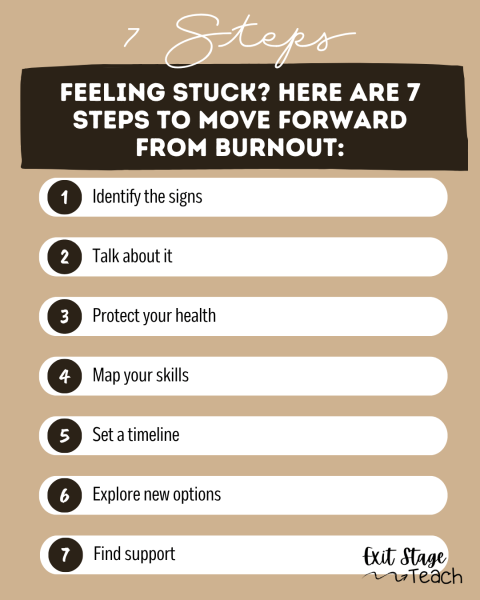This post may contain affiliate links which means we may receive a commission for purchases made through our recommended links. We will only recommend products or services that we have personally used or that members of our community are currently using. This is of absolutely no cost to you, the company we recommend may pay us a small fee for linking you with them and this helps us with the running costs of our website. Learn more through our Private Policy and Affiliate Disclaimer pages.
For many Australian teachers, the classroom has become both a place of deep purpose and profound exhaustion, leading to Teacher burnout in Australia. You entered the profession to inspire, to guide, to create opportunities for young minds. Yet, over time, the weight of admin, expectations, and constant pressure can leave even the most passionate educators drained. This isn’t just a bad week or a tough term; it’s part of a growing hidden crisis: teacher burnout in Australia.
And if you’re feeling it, you are not alone. Most importantly, it is not your fault. We have seen firsthand in our Exit Stage Teach Community the dramatic impact that Teacher Burnout is having across the nation.
Understanding Teacher Burnout
Burnout is more than just being tired. It’s a state of emotional, physical, and mental exhaustion caused by prolonged stress. Among Australian teachers, it often looks like:
- Constant exhaustion, even after a weekend or holiday break.
- Emotional detachment, finding it hard to connect with students, colleagues, or even family.
- Loss of motivation, once-loved lessons now feel like a chore.
- Physical symptoms, such as headaches, poor sleep, or stress-related illnesses.
What makes this so painful for teachers is the clash between passion and reality. You love teaching, but the system makes it nearly impossible to thrive.

Why Australian Teachers Are Burning Out
The crisis isn’t about individual resilience. It’s systemic. Here are some of the most pressing factors:
Workload Overload
The 2022 Australian Principal Occupational Health, Safety, and Wellbeing Survey found that teachers and principals are working an average of 55 hours or more per week. Between lesson prep, marking, paperwork, and compliance tasks, many teachers are doing the work of two jobs.
Behavioural Challenges
Teachers are reporting a rise in behavioural issues and complex student needs—without the resources or support to manage them. This adds enormous emotional and physical stress to daily teaching.
Standardised Testing Pressure
NAPLAN and performance measures often leave teachers feeling judged rather than trusted. The focus shifts from fostering learning to hitting targets.
Work-Life Erosion
Evenings, weekends, and holidays—once sacred for rest—are consumed by admin and preparation. A 2019 report revealed that nearly half of Australian teachers regularly work during their holidays.
Systemic Underfunding
From lack of classroom resources to understaffed schools, teachers are expected to do more with less, and the toll is evident.
This isn’t just stressful, it’s unsustainable.
The Human Cost of Staying Silent
Burnout doesn’t just impact your career; it ripples into every area of your life.
Teachers describe:
- Emotional impact: anxiety, stress, loss of confidence, and, in severe cases, depression.
- Relationships suffering: being too drained to connect with loved ones or maintain friendships.
- Health risks include stress-related illnesses, high blood pressure, insomnia, and long-term effects.
When teachers try to “push through,” the result is often more profound exhaustion and disconnection. Burnout is not a sign of weakness. It’s your body and mind sending a clear signal that something needs to change.
Recognising the Signs: Is It Time for a Change?
If you’re nodding along, it may be time to ask yourself:
- Do I still find joy in the classroom, or am I just surviving day to day?
- Is my health or family life suffering because of my work?
- Can I see myself doing this in 5 years without breaking down?
Sometimes the bravest step isn’t pushing through but choosing yourself.
What Comes Next: Pathways Beyond Burnout
Leaving teaching isn’t about failure. It’s about reclaiming your future. Here are some steps to begin that journey:
1. Acknowledge Your Feelings
Naming burnout helps release guilt. It’s not a weakness. It’s a valid response to an overwhelming system.
2. Explore Transferable Skills
Teachers are natural communicators, leaders, organisers, and problem-solvers. These skills translate beautifully into careers like training, consulting, project management, HR, and even entrepreneurship. We share practical tips in “Top 10 Transferable Teaching Skills for a New Career “
3. Plan Your Exit Strategy
Think practically about:
- Finances: superannuation, savings, or side income while transitioning.
- Timelines: whether you want to leave quickly or prepare over 6–12 months.
- Small steps: updating your resume, networking, or enrolling in a short course.
4. Seek Support and Community
Transitioning alone is isolating. Surround yourself with others who understand. Communities like Exit Stage Teach exist to walk alongside you every step of the way.
5. Consider New Opportunities
Some teachers find joy in adjacent paths, such as tutoring, creating online courses, instructional design, or even launching their own businesses. Others rediscover balance in entirely new industries.
Stories of Hope: Teachers Who Found Life After Burnout
Across Australia, more teachers are bravely rewriting their stories:
- A primary teacher who became a corporate trainer, thriving in a role that values her communication skills.
- A secondary teacher who now runs a tutoring centre, using her expertise on her own terms.
- An art teacher who launched a creative business, blending passion with flexibility.
You’ll find more inspiring stories in our Teacher Transitions Blog Series, where educators share how they turned burnout into breakthroughs.
Practical Checklist: 7 Steps to Move Forward from Burnout
- Identify the signs of burnout in your daily life.
- Discuss it with a trusted colleague, friend, or professional.
- Take small steps to protect your health (exercise, sleep, counselling).
- Map out your transferable skills.
- Create a realistic timeline for change.
- Explore new career or business options.
- Connect with supportive communities, such as Exit Stage Teach.

Your Next Step
If you are struggling with burnout, remember this: you are not broken. You are not failing. You are simply carrying too much in a system that asks too much of you.
Choosing yourself is not selfish! It’s survival. And beyond survival, there is space for joy, creativity, and growth.
At Exit Stage Teach, we believe in assisting teachers to find joy again. We provide resources and community so that no teacher has to walk this path alone.
Ready to explore what’s next? Join the Exit Stage Teach community today and take the first step toward turning burnout into a breakthrough.










